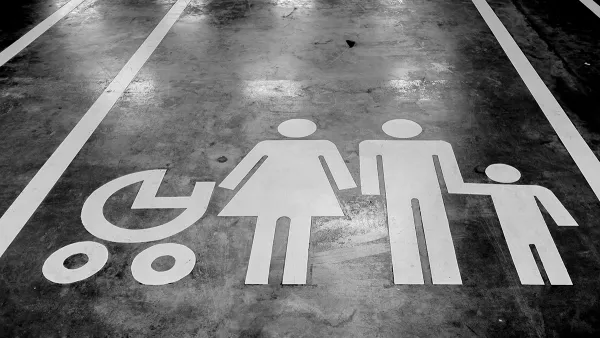Even when urban centers are losing families, this trend does not necessarily apply to rich areas near downtown.

One common argument against the long-term viability of urbanism is that cities are just playgrounds for the rich and childless, and that families are continuing to desert cities. Last week, NYU's Furman Center issued a report on New York's housing problems, listing data for each of the city's 55 neighborhood clusters.
The most interesting data set (at least for the purposes of this post) is the percentage of households with children under 18. Does it show that families are leaving New York City? Yes and no.
One might think that, based on the "playground" thesis, that expensive, dense neighborhoods are incapable of retaining families. But the data suggests the opposite: rich neighborhoods are gaining families, and not-so-rich neighborhoods are bleeding families.
In particular, Manhattan has 12 neighborhood clusters. In seven of them, median household income exceeds $90,000 per year (Financial District, Greenwich Village,Chelsea, Midtown,Turtle Bay, Upper West Side, Upper East Side). In all of these areas, population density exceeds 45,000 people per square mile and over 80 percent of commutes are car-free. And in every single one of them, the "family percentage" rose between 2000 and 2014. For example, in the Upper East Side, the percentage of households with children rose from 13 percent in 2000 to 18 percent in 2014. And in the Upper West Side, the family percentage rose from 14 percent to 18 percent. Even in less family-oriented rich areas, the family percentage rose: in Chelsea and Midtown, from 8.4 percent to 9.1 percent.
But Manhattan also has five clusters where the median income is below $50,000 (East Harlem, Central Harlem, Washington Heights, Morningside Heights, Lower East Side). All of these areas have historically been more family-oriented than the city’s richer areas. And in all of them, the family percentage nosedived. For example, in East Harlem, Manhattan’s poorest area, the percentage of households with children nosedived from 38 percent to 27 percent. Similarly, in Central Harlem the family percentage declined from 34 percent to 25 percent.
The city's less affluent outer boroughs generally lost children as well. In Brooklyn's one truly affluent area, Park Slope (household income $113,187), the percentage of households with children increased from 25 percent to 32 percent. But in the 11 areas with incomes under $50,000, the family percentage declined in nine, rising only in Boro Park and nearby Bensonhurst. Brooklyn's six in-between areas (Greenpoint, Canarsie, Sheepshead Bay, Flatbush, Fort Greene, Bay Ridge) also lost families: the family percentage rose slightly in one (Bay Ridge) and declined elsewhere.
So at least in New York, rich areas gained children and less rich areas (whether they were gentrifying, middle-income or poor) tended to lose them.

Analysis: Cybertruck Fatality Rate Far Exceeds That of Ford Pinto
The Tesla Cybertruck was recalled seven times last year.

National Parks Layoffs Will Cause Communities to Lose Billions
Thousands of essential park workers were laid off this week, just before the busy spring break season.

Retro-silient?: America’s First “Eco-burb,” The Woodlands Turns 50
A master-planned community north of Houston offers lessons on green infrastructure and resilient design, but falls short of its founder’s lofty affordability and walkability goals.

Test News Post 1
This is a summary

Analysis: Cybertruck Fatality Rate Far Exceeds That of Ford Pinto
The Tesla Cybertruck was recalled seven times last year.

Test News Headline 46
Test for the image on the front page.
Urban Design for Planners 1: Software Tools
This six-course series explores essential urban design concepts using open source software and equips planners with the tools they need to participate fully in the urban design process.
Planning for Universal Design
Learn the tools for implementing Universal Design in planning regulations.
EMC Planning Group, Inc.
Planetizen
Planetizen
Mpact (formerly Rail~Volution)
Great Falls Development Authority, Inc.
HUDs Office of Policy Development and Research
NYU Wagner Graduate School of Public Service





























